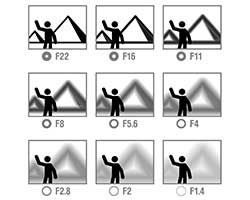Hema Narayanan in a known photojournalist and writer from Bangalore,India. After earning a Master’s Degree in engineering, Hema Narayanan worked in IT and software development for a decade within her flourishing local tech industry. Often traveling for work, she began to pack a camera on her professional journeys, keeping a personal photo documentation of the places she was going. She was getting good behind the lens. She gave up her IT job in 2009 to pursue photojournalism and writing. Now a graduate of NYIP, Hema is frequently featured in globally renowned publications such as National Geographic Traveler India, Discover India & the Deccan Herald. Licensed with Getty and Shutterstock, she teaches photography and also leads photo journeys,acting as both a guide and mentor to aspiring photographers throughout India. After recently collaborating with Hema for a feature in our Student Success blog, we’re happy to announce that we’ll be sharing some guest blog posts from her throughout the following months. Enjoy!

Silhouettes are a beautiful way to convey the emotion, drama, mystery and mood in front of you to the viewers of your photos. They make heads turn and photos stand out due to their spectacular colors and their simplicity yet profound capability to communicate visually.
Silhouettes are a picture of something (could be a person, animal, object or a scene you see) which is represented as a dark shape against a light background. Darkened shapes offer artists a unique platform to emphasize the unique message you as a photographer want to convey. The intense colors of the sky then help to accentuate the vibrancy and the beauty of a silhouette image.
Best done during: Golden Hours of the day [With backgrounds being a bright cloudless sky with the intense sun setting or rising
Basic strategy to employ:
- Best to choose a strong subject
- Place your subject, object or scene (shape you want to be blacked out) in front of a source of light, i.e. position the brightest light source behind your subject.
- In your Aperture Priority mode, choose a narrow aperture for a higher depth of field and to achieve finer details of the outline of the silhouette
- Meter off the most intense light around/behind the main subject which is intended to be made a silhouette. Use AF focus point appropriately.
- Force your camera to set its exposure based upon the brightest part of your picture (the background) and NOT from the subject of your image (else it will not be a silhouette)
- In doing this your subject will be under exposed and thus entirely dark making it a magical silhouette!
Things to remember:
- Make sure you turn off your flash
- Get your light reading right. If the camera finds it hard to lock the focus in space, you need to manually focus (move to MF on your lens)
- Good idea to keep your silhouette distinct with minimal/nil clutter
- Choose either Evaluative/Matrix or Spot Metering (and see the difference)
- If, the region of the intense light area and where your subject is, are at a distance, lock the readings using Exposure Lock, recompose and shoot to create a silhouette. Alternatively, press the shutter halfway down when pointing at the brightest part of your picture and then move your camera back to frame your shot with the subject where you want it and then finish taking the shot. But using a Lock is a fool-proof method.
- One can use the Bracketing technique on sunrises and sunsets to get varied shots at slightly different exposures.
It’s the art of not giving away everything that I like about a Silhouette. They don’t give the viewer of a clear picture of everything in the scene, but instead leave part of the image to the imagination of the viewer.
Want to learn more? NYIP offers accredited photography courses online that can help you become a photographer or start a new career. Request your free course catalog today!






